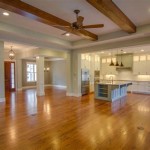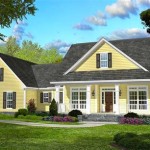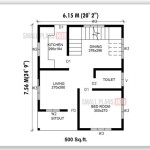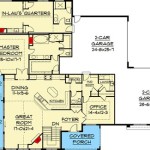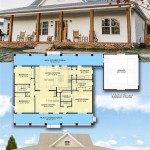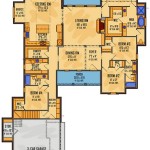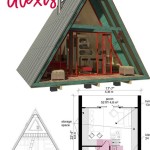House Plans For Sloping Lots In The Rear
Building on a sloping lot presents unique challenges and opportunities. While a flat, level plot might seem like the easier option, a sloping lot, particularly one that slopes downward in the rear, can be leveraged to create a visually appealing and functional home. Special considerations are needed when selecting or designing house plans for these types of properties. This article explores the factors involved in choosing the right house plan for a sloping lot with the rear of the property sloping downward, examining design strategies, construction techniques, and the advantages such a lot can offer.
The primary obstacle with a rear-sloping lot is the management of the earth. Excavation is often necessary to create a stable building platform. This excavation can result in significant costs and may require retaining walls to prevent soil erosion and land slippage. Furthermore, drainage becomes a critical factor. Without proper planning, rainwater runoff can accumulate around the foundation, leading to structural damage and potential flooding. However, these challenges are not insurmountable, and careful planning can transform them into advantages.
Conversely, a rear-sloping lot can present stunning design possibilities. The slope can be exploited to create a walkout basement, effectively adding an entire level of living space to the home without the cost of extensive excavation. This lower level can be used for recreation rooms, guest suites, or even an in-law apartment, providing enhanced functionality and potentially increasing the property’s value. The slope also often allows for enhanced views from the upper levels of the home, capturing panoramic vistas that would be impossible on a flat lot.
Understanding the Slope and Site Analysis
Before selecting any house plan, a thorough site analysis is crucial. This involves accurately measuring the slope's grade, identifying soil types, and assessing drainage patterns. A surveyor or engineer can provide detailed topographic maps that illustrate the contours of the land. This information is essential for determining the feasibility of different house plans and for planning the necessary site modifications.
Soil testing is equally important. Different soil types have varying load-bearing capacities and drainage characteristics. Knowing the soil composition allows for the selection of appropriate foundation systems and drainage solutions. For example, sandy soils drain well but may have lower load-bearing capacity compared to clay soils, which retain water but can support heavier loads. If the soil is unstable, soil stabilization techniques, such as compaction or soil replacement, may be necessary.
Drainage is a pivotal aspect of site analysis. The natural flow of water across the property must be understood, and a plan must be developed to manage stormwater runoff effectively. This may involve installing drainage pipes, creating swales (shallow channels), or constructing retaining walls to redirect water away from the foundation. Neglecting drainage can lead to serious structural problems and costly repairs in the future.
Furthermore, the orientation of the slope in relation to the sun’s path is significant. A south-facing slope will receive more sunlight throughout the day, which can impact heating and cooling costs. A north-facing slope will be cooler and shadier. This information should inform the placement of windows and the selection of energy-efficient building materials. Existing vegetation should also be considered. Mature trees can provide shade, reduce erosion, and enhance the aesthetic appeal of the property, but they may also interfere with construction and require careful management.
Choosing the Right House Plan Style
Several house plan styles are particularly well-suited for rear-sloping lots. The ideal choice depends on the homeowner's preferences, budget, and the specific characteristics of the site.
Ranch-style houses: While typically associated with flat lots, ranch homes can be adapted for sloping lots. A split-level ranch can be designed to follow the grade of the land, minimizing excavation and creating a seamless transition between levels. This style often incorporates a walkout basement on the lower level, taking advantage of the slope.
Two-story houses: A two-story house can be effectively integrated into a rear-sloping lot. The front of the house can appear as a single story, while the rear opens up to expose the lower level, creating a walkout basement. This design maximizes living space and allows for stunning views from the upper level.
Walkout basement designs: These plans are specifically designed for sloping lots and feature a fully functional basement that opens directly to the backyard. The basement level can include bedrooms, bathrooms, living areas, and even a home theater. Walkout basements significantly increase the living space of the home and offer easy access to outdoor areas.
Contemporary designs: Modern and contemporary house plans often incorporate innovative design features that can be used to maximize the potential of a rear-sloping lot. These designs may include large windows to capture views, cantilevered decks that extend over the slope, and creative landscaping that integrates the home into the surrounding environment.
Custom designs: For those who desire a truly unique home, a custom-designed house plan tailored to the specific characteristics of the lot is the best option. A skilled architect can create a plan that maximizes the advantages of the slope, addresses any potential challenges, and reflects the homeowner's personal style and needs. However, custom designs typically involve higher costs and a longer design process.
Construction Techniques and Considerations
Building on a rear-sloping lot requires specialized construction techniques to ensure the structural integrity and longevity of the home.
Foundation Design: The foundation must be designed to withstand the pressure of the surrounding soil and to prevent water infiltration. A reinforced concrete foundation is often the preferred choice for sloping lots. The foundation may need to be stepped down the slope to maintain a level building platform. This involves creating a series of short, vertical sections that are connected by horizontal sections.
Retaining Walls: Retaining walls may be necessary to stabilize the slope and to prevent soil erosion. These walls can be constructed from various materials, including concrete, stone, timber, or precast blocks. The design and construction of retaining walls should be done by a qualified engineer to ensure their stability and effectiveness.
Drainage Systems: A comprehensive drainage system is essential to manage stormwater runoff and to prevent water damage to the foundation. This may involve installing perimeter drains around the foundation, grading the land to direct water away from the house, and creating swales to capture and redirect runoff. A French drain, consisting of a perforated pipe buried in gravel, can be used to collect and drain water from the soil.
Erosion Control: During construction, measures must be taken to prevent soil erosion. This may involve using silt fences, hay bales, or erosion control blankets to stabilize the soil. Temporary drainage systems may also be necessary to manage stormwater runoff during construction.
Accessibility: Access to the site for construction equipment and materials can be challenging on a sloping lot. Careful planning is required to ensure that equipment can be safely and efficiently moved around the site. Temporary roads may need to be constructed to provide access to the building area.
Landscaping: Landscaping plays a crucial role in integrating the home into the surrounding environment and in preventing soil erosion. Terracing can be used to create level planting areas on the slope. Native plants are particularly well-suited for sloping lots, as they are adapted to the local climate and soil conditions. Ground cover plants can be used to stabilize the soil and to prevent weed growth.
Building on a rear-sloping lot requires careful planning, specialized construction techniques, and a thorough understanding of site conditions. However, the rewards can be substantial: a unique and visually appealing home that maximizes the potential of the property and offers stunning views and enhanced functionality.

Plan 64452sc House For A Rear Sloping Lot Architectural Design Plans Architecture

Plan 012h 0025 The House

Plan 64452sc House For A Rear Sloping Lot Architectural Design Plans Slope

A Guide To Sloping Lot House Plans

Plan 280059jwd Modern Ranch Home For A Rear Sloping Lot House Plans

Duplex For A Down Sloping Lot 8188lb Architectural Designs House Plans

Looking For The Perfect Affordable Cottage With A Large Covered Balcony Plan 1143

Plan 85325ms 3 Bed Modern House For The Rear Sloping Lot Lake Plans

Sloping Lot Modern Style House Plan 1344 Lyra

Plan 68753vr Mid Century Modern Mountain House For Rear Sloped Lot Plans Sloping

